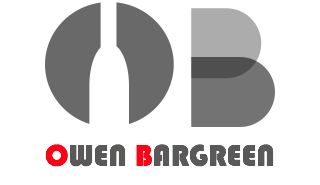A trip to Napa would not be complete without a trip to the Robert Mondavi Winery Reserve Tasting Room. A few years back I was lucky enough to enjoy a bottle of the 1996 Reserve Cabernet and this trip I sampled the 1979 Reserve Cabernet. Few places open such special older bottlings. Robert Mondavi Winery was founded in 1966 and the To Kalon Vineyard, planted at that time, has been renowned for producing some of the finest Cabernet in the world. Many people in the United States wine industry have been pushing to have the To Kalon Vineyard recognized as one of the first growth (finest) vineyards in North America. Along with To Kalon Vineyard, Robert Mondavi Winery sources grapes from some of Napa Valley’s great vineyards, including those from Stag’s Leap (particularly Cabernet) and Carneros (Pinot Noir and Chardonnay).
The winery itself is an incredible marvel with picturesque statues and incredibly beautiful vineyards in the background. If you have never made your way to Robert Mondavi Winery, it is truly a must-see for those interested in wine and also those taking in the aesthetic beauty of the accompanying vineyards. The iconic mission style reserve room at Robert Mondavi is one of my favorite stops in the valley. Having visited this spot for more than 10 years, this visit was one to remember. One of the coolest wines I sampled on my visit to Napa was the 1979 Robert Mondavi ‘Reserve’ Cabernet (WWB, 91). This was a profound wine that is showing its age but still displays a lovely range of fruit flavors. The heavyhitter of the bunch was the 2012 Robert Mondavi Winery ‘Reserve’ Cabernet (WWB, 95) which is a special occasion wine that is drinking beautifully at its young age. These wines are known for aging beautifully and this wine was no exception. Learn more about Robert Mondavi Winery at http://www.robertmondaviwinery.com/ Here are the fantastic new release wines that I recently sampled at Robert Mondavi Winery.
2012 Robert Mondavi ‘Oakville’ Cabernet- This gorgeous wine opens with aromas of anise, wild blackberry, and mocha with creme de cassis. There are dense flavors of creme de cassis, blackberry pie, coffee grounds, creosote and suggestions of black olive. This is viscous and mineral driven wine that will need time in the bottle for the fruit to fully integrate and for the moderate tannins to settle. Drink 2018-2035- 93
2013 Robert Mondavi ‘Reserve’ Chardonnay - This opens with rich flavors of brioche, poached pear, nutmeg and toasted hazelnuts. There are opulent flavors of banana, apricot, orange rind, Gala apple and a lingering cream finish. There is an exotic edge to this rich Chardonnay Drink 2016-2024- 93
2012 Robert Mondavi ‘Reserve’ Fume Blanc- This impressive wine starts with aromatics of cut grass, Jalapeño, cedar and macadamia nut. There are flavors of Bartlett pear, nutmeg, and aala Apple. Lovely weight and texture that is one of a kind. Drink 2016-2024- 93
2012 Robert Mondavi ‘I Block’ Fume Blanc- This dense Sauvignon Blanc wine begins with aromas of lemongrass, Meyer lemon, and unripe pear. This leads to flavors of Meyer lemon oil, Bartlett pear, starfruit and citrus blossoms. There is marvelous intensity and richness, showcasing this great vintage. Drink 2016-2024- 93
2013 Robert Mondavi ‘Reserve’ Pinot Noir-The wine begins with aromas of cardamon, red currant and red raspberry with dried sage. There are rich flavors of red raspberry, pipe tobacco, dried cranberry and red cherry with hints of blood orange rind. There is a gorgeous and subtle citrus component to the wine. Impossible to resist right now, this drinks beautifully straight out of the bottle. Drink 2016-2025- 93
2011 Robert Mondavi ‘Reserve’ Cabernet- This cold vintage wine starts with aromas of dried sage, blackberry cobbler, pipe tobacco and anise. There are flavors of blackberry pie, mocha, and anise. This has wonderful range and complexity considering the coldness of the vintage. Drink 2016-2028- 93
2012 Robert Mondavi ‘Stags Leap District’ Cabernet- This wine begins with aromas of graphite, cassis, blackberry pie, mocha and anise. There are rich flavors of blackberry pie, creme de cassis, coffee grounds and anise. This Cabernet has gorgeous depth and complexity and is drinking beautifully straight out of the bottle right now. Grab a juicy ribeye steak for this one Drink 2016-2033- 94
2012 Robert Mondavi ‘Reserve’ Cabernet- This impressive bottling starts with rich aromatics reminiscent of mocha, creme de cassis, graphite and black olive with suggestions of Black Forest cake. There are deep flavors of anise, spicebox, creme de cassis, mocha and pipe tobacco. This is a profound wine that is up there with the best of Napa Valley. It is impossible to resist right now. Drink 2016-2035- 95
1979 Robert Mondavi ‘Reserve’ Cabernet- This is a wine to savor. While it is slowing down, it is still drinking marvelously despite being more than 35 years old. This wine opens with dried figs, prune, red cherry and barnyard. There are flavors of anise, red currant, red cherry, and dried sage. Just incredible for its age but try to enjoy this wine within the next few years. Drink 2016-2020- 91


























